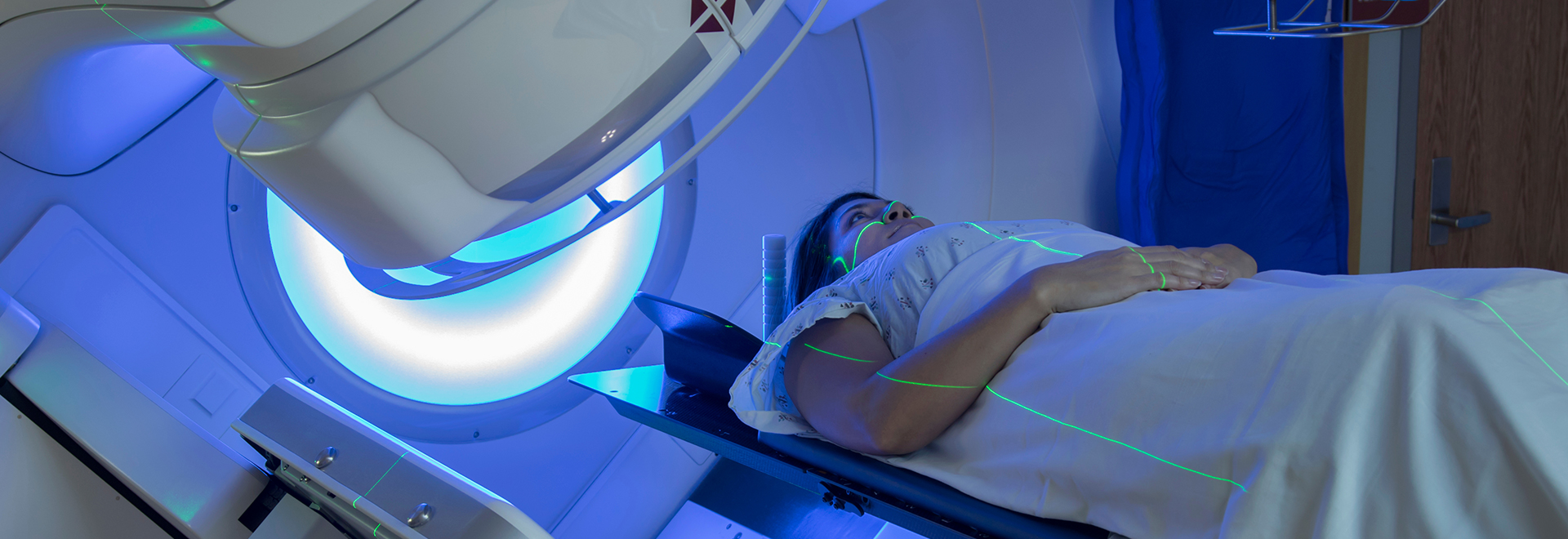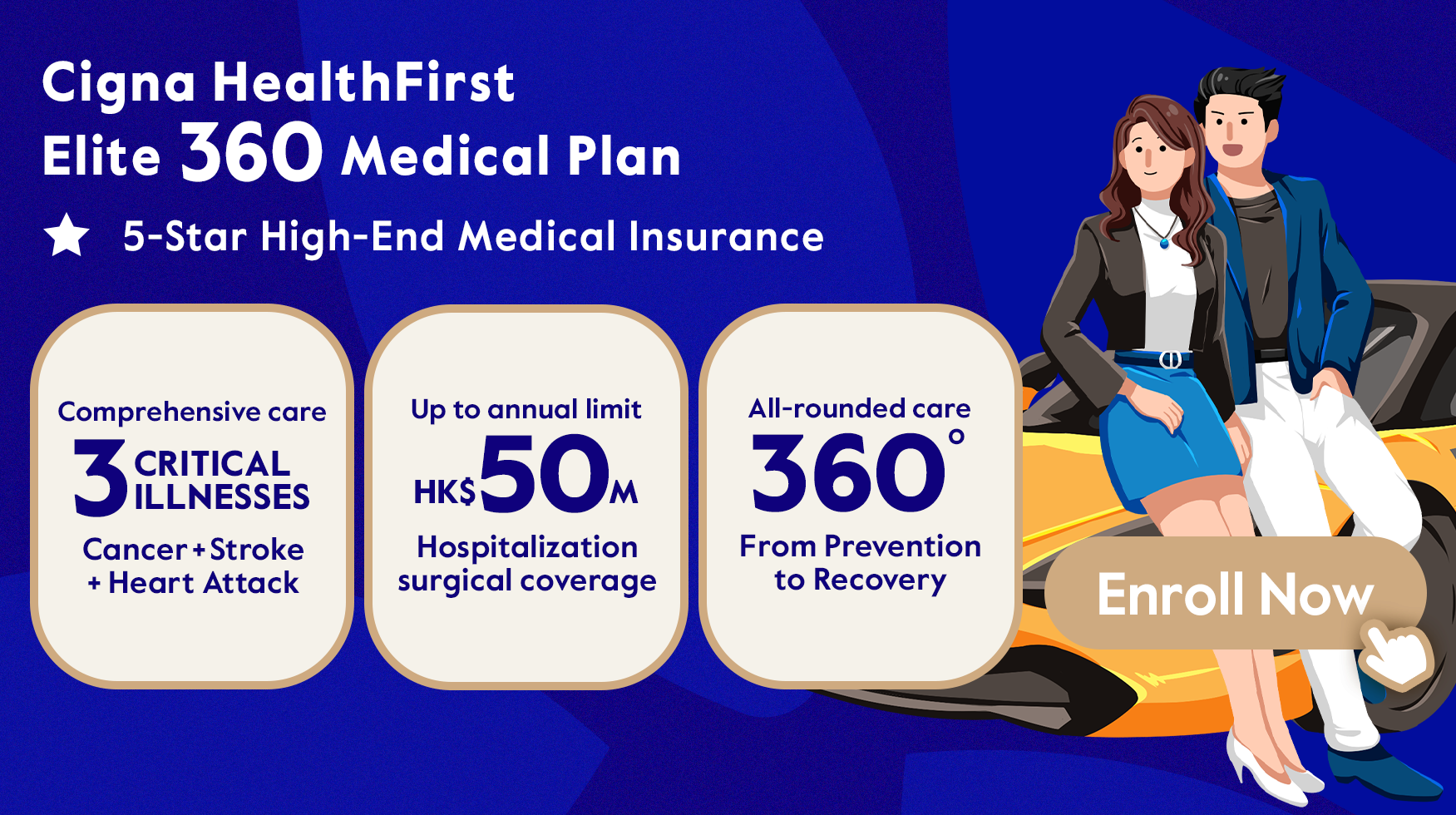Radiation therapy, also called radiotherapy, is one of the most common cancer treatments nowadays apart from chemotherapy, surgery and targeted therapy drugs.
Radiotherapy uses high doses of radiation to kill cancer cells and shrink tumours. At high doses, the therapy kills cancer cells or slows their growth by damaging their DNA. Cancer cells whose DNA is damaged beyond repair stop dividing or die. When the damaged cells die, they are broken down and removed by the body. Although radiation therapy causes damage to both cancer cells and normal cells, the latter ones can repair while the former ones cannot.
Application of Radiotherapy on Cancer Treatments
Approximately 60-70% of cancer patients receive radiotherapy at different cancer stages. Radiation therapy can not only treat cancer directly but also complement other treatments and relieve some symptoms caused by cancers. Radiotherapy can be divided into the following three types.
|
Types of Radiation Therapy by Aims |
Curative Therapy |
Adjuvant Treatment |
Palliative Treatment |
|
Reasons for Adoption |
Treat early-stage cancer. If the tumour grows in/around vital organs, radiotherapy may be employed to replace surgical resection. |
Post-surgery: Destroy potential residual tumour cells around the surgical wound to reduce the risk of recurrence. Pre-surgery: Reduce the tumour size to raise the feasibility of the surgery and complete removal. |
Relieve the discomfort caused by the cancer. |
|
Application to Respective Cancers / Conditions |
|
|
|
|
Treatment Duration |
Over 30 sessions (20-30 mins per session) in more than 6 weeks, 5 times a week and once per day |
Incorporate with other treatments, such as surgical removal or chemotherapy; 25-30 sessions of radiotherapy in the span of 5-6 weeks |
Generally take less than 2 weeks |
Types of Radiation Therapy by Techniques
There are two main types of radiation therapy, namely external and internal beam.
- External Beam Radiation Therapy (EBRT):It comes from a machine that aims radiation at your cancer and can be used to treating larger sites
- Internal Radiation Therapy:This is a treatment in which a source of radiation is put inside your body, next to the tumour site, such as head and neck, chest cavity, bladder, prostate, uterus etc.
EBRT can be further categorised by its techniques, which are conventional (2D) radiation therapy, 3D conformal radiation therapy and intensity-modulated radiation therapy (IMRT).
In the 80s, conventional (2D) radiation therapy was employed in the majority. Due to its low conformity, adjacent tissues/organs often fall into the high dose region resulting in treatment side effects.
With medical and technological advancement, especially in radiotherapy (such as CT scans). 3-D conformal radiation therapy started to replace the conventional one with higher accuracy to target the tumour and less damage posed on normal cells/tissues.
IMRT is a type of 3-D conformal radiation therapy. Like 3-D conformal radiation, radiation beams are aimed at the tumour from several directions. IMRT uses many smaller beams than 3-D conformal, and the strength of the beams in some areas can be changed to give higher doses to certain parts of the tumour.
Procedures of Radiotherapy
Before starting radiotherapy, your doctor would conduct a planning session and prepare a mould for easier and more precise site targeting. With the mould, your doctor would perform an imaging test, such as CT scan, MRI or PET scan, and mark the treatment site on your body with a pen for alignment.
Before each session, your doctor makes sure that you are in the correct position for treatment, who will then stay in the treatment room alone for minutes for the radiotherapy. You will be closely monitored through a closed-circuit television system. If necessary, the patients can also communicate with the staff by using the intercom. No pain will be experienced during the treatment procedure.
Side Effects of Radiotherapy
Radiotherapy is a local treatment, so the side effects you may have depend on the part of the body that is treated, unlike chemotherapy. The side effects can be short-term and long-term.
Short-term side effects of radiotherapy include:
- Fatigue or tiredness: The damage by radiotherapy on normal cells and frequent travel for receiving treatments drain patients’ energy.
- Nausea, vomiting and decreased appetite: Commonly occur among those receiving brain or upper abdomen treatment; can be prevented by medication
- Temporary hair loss in the area treated: Commonly observe among those receiving brain or head and neck cancer treatment; hair grows again after the treatment.
- Skin changes: Some people who receive radiation therapy experience dryness, itching, blistering, pain or peeling.
Long-term side effects may occur months or years after radiotherapy and may persist. These include:
- Fibrosis of subcutaneous fat tissue and muscle
- Prone to Rectal mucositis causing diarrhoea with blood
- Irritation of the bladder lining leads to blood in the urine or frequent urination
- Ovarian dysfunction, early menopause
- Vaginal dryness, vaginal stenosis (less elastic, narrow, shorter vagina), vaginal atrophy (weak vaginal muscles and thin vaginal wall)
- Sexual problems for men, such as erectile dysfunction, are the inability to get or maintain an erection. Lowered sperm counts and reduced sperm activity
Dietary tips During Radiotherapy
To relieve the above side effects, you could make the following adjustments to your diet and habits according to your body’s reactions.
- Avoid foods that are too hot or too cold
- Quit smoking and avoid alcoholic beverages
- Avoid spicy, too sour and oily foods
- Consume blended meal to reduce swallowing
- Keep hydrated
- Eat small and more frequent meals for easier digestion
- Opt for nutritional milk for extra calorie intake
- Eat slightly sour candies to raise your appetite if receiving chemotherapy at the same time
Skin Care during Radiotherapy
You need to be gentle with your skin during radiation therapy. The following tips will help decrease skin irritation and breakdown.
- Redness and dryness may be observed in the treated area. You could use aloe gel or aqueous cream to moisturise your skin and rinse it off with warm water before the treatment.
- Take a break from products that contain fragrance
- Wear soft and loose-fitting clothing
- Take a shower rather than a bath with warm water
- Keep skin in the treated area dry
- Avoid direct sun exposure to the treated area to prevent sunburnt
According to your conditions, you could stay active during the treatment, such as doingyoga, practising qigong and taking a walk, to relax and cope with anxiety. In addition, talking to your friends and family about your feelings, maintaining a normal social life and staying positive is also vital on the road to recovery.
Estimated Costs of Radiation Therapy
According to the locations and stages of cancers, your doctor will advise the types and fractions of radiotherapy. With reference to the charges of the two private hospitals in Hong Kong, the costs of radiotherapy treatments range from HK$30,000 to HK$200,000.
Stereotactic radiotherapy is not applicable to treat all types of cancers. Therefore, the below table lists the reference radiotherapy treatment fees by cancer types or conditions.
Costs of Stereotactic Radiosurgery (SRS)*
|
Respective Cancers |
Types of Radiation Therapy |
||
|
Reference Fees for Radiotherapy |
Reference Fees for Radiotherapy |
||
|
Brain Cancer / Benign Brain Lesions |
Stereotactic Radiosurgery |
HK$55,000 – 105,000 |
HK$45,480 – 98,000 |
|
Lung Cancer |
Stereotactic Body Radiosurgery |
HK$48,000 – 74,000 |
HK$53,230 – 98,000 |
|
Liver Cancer |
Stereotactic Body Radiosurgery |
HK$48,000 – 74,000 |
HK$45,480 – 130,380 |
|
Prostate Cancer |
Stereotactic Body Radiosurgery |
HK54,000 – 69,500 |
HK$45,480 – 115,540 |
Costs of Radiotherapy*
|
Respective Cancers |
Types of Radiation Therapy |
||
|
Reference Fees for Radiotherapy |
Reference Fees for Radiotherapy |
||
|
NPC / Head and Neck Cancer |
Radiotherapy |
HK$102,000 – 151,000 |
HK$112,080 – 199,260 |
|
Breast Cancer |
Radiotherapy |
HK$32,000 – 133,000 |
HK$34,160 – 128,630 |
|
Colon Cancer / Cervical Cancer |
Radiotherapy |
HK$45,000 – 136,000 |
HK$81,470 – 118,644 |
*Charges as of 9 Jul 2021
The following are the charges of the Hospital Authority for your reference.
|
Types of Radiation Therapy |
Fees per Session |
|
Brachytherapy (Internal Radiation Therapy)
|
HK$18,500 – 36,050 |
|
Teletherapy (EBRT)
|
|
*Charges as of 9 Jul 2021
Remarks: The above charges do not include planning and moulding procedures. Radio-pharmaceuticals required are charged separately at cost.
Prolonged radiotherapy, the side effects and costs incurred are exhausting for cancer patients, so an all-rounded and tailor-made assistance becomes essential on the road to recovery. Cigna’s first-in-market ‘Cancer and Chronic Diseases Care Program at Home'allows you to receive cancer treatments in the comfort of your home, subject to doctor’s recommendations. The Program greatly reduces the risk of infection to you and your family members and ensures an entire focus on your treatment and well-being.
Cigna HealthFirst Elite 360 Medical Plan offers comprehensive and personalized medical coverage across the stage prevention, diagnosis, treatment and recovery, with a range of hospital and surgical benefits, optional insurance benefits with an annual limit of up to HK$50 million, personalized health assessment, three critical illnesses(cancer, stroke and heart attack) all-rounded care and international medical concierge service. A 360-degree total health protection that spans across all the key stages of your health journey. Learn more here.


